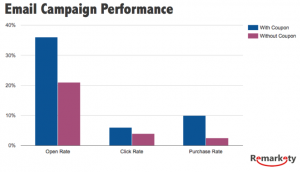Advertising a community college? You probably don’t want people looking for a community theater or college sports scores. Proper negative keywords are just as important as keywords.
According to a study by SiteWit in January 2015, the top three paid spots get 41% of the clicks on the search page. Unfortunately those coveted spots can be expensive. And wasteful clicks can drain an ad budget quickly. Yet, online marketers are still making the mistake not using negative keywords. Negative keywords are greatly underutilized in AdWords and are overlooked by many small business owners. Many marketers overlook this strategy and unfortunately, Google will not tell you about it; Google will only tell you you’re not spending enough to reach your audience. This is not necessarily true, as you just may not be optimizing your ads enough to reach your targeted audience.
When you create a keyword strategy for a campaign, you have five different match types to assign a given keyword: broad match, broad modified, phrase match, exact match, and negative match. Each serve the given keyword in a different way:
Broad Match: This match type has the largest reach and tends to be the least expensive. When using broad match, your ad is eligible to appear whenever a user’s search query includes any word in your key phrase, in any order or using synonyms. For example, if you use broad match on “luxury condo,” your ad might be displayed if a user types “expensive homes,” “condo rentals,” or possibly “real estate listings”.
Broad Modified: This match type enables you to reach a wide audience, but have tighter control over who sees your ad by only targeting users in a key phrase using the “+” parameter. When you add the plus sign in front of a keyword, you’re telling Google that the search query must include that term.
Phrase Match: Marketing to users whose queries contain part of the keyword phrase. For example, someone searching for “red boots”, your ad could appear when a user searched for “knee high red boot”, “discount red boots,” or “red boots on sales,” but not for searches like “red shoes”, “black boots”, or “boots that are red”.
Exact Match: Only marketing to users who search for the exact keyword phrase you’ve assigned to the ad. For example, if your assigned keyword phrase is “red boots,” a user would have to search that exact phrase to see your ad.
Most digital marketers will try to maximize user exposure by assigning “broad match” or “phrase match.” Although this is a great strategy to increase your audience, it can be vastly improved by including negative keywords as well. Negative keywords assist in targeting your audience by filtering out unwanted searches. To keep with the earlier example, let’s say that you have an ad for red shoes. However, you do not want to target people searching for Dorothy’s red shoes for Halloween. To avoid those unwanted searches, you can input “Dorothy” or “Halloween” as a negative keyword in the ad campaign.
This is why negative keywords are so incredibly important. They keep away users who will never buy your product or service, thus saving your campaign money. If someone clicks on your ad thinking it will get them what they want, or worse, clicked by mistake, you still pay for that click. This can result in keyword searches that drive up click volume but do not convert to a sale. This increase cost per conversion and can quickly make a potentially profitable keyword unprofitable. Also, inflated keyword impressions will create a lower CTR% which in turn will drive your quality score lower. This lower quality score will lead to a higher cost per click for your keywords.
Although negative keywords are part of keyword strategies in an ad campaign, a separate strategy can be created around them. There are a few ways to improve and organize your negative keywords.
Build a library
By creating your own spreadsheet of negative keywords, you can update and improve this list monthly. This allows you to track the negative keywords’ progress and update with new data. You will also be able to assess that data and make decisions for your campaign by seeing the bigger picture.
Evaluate Your Data
Using a good chunk of data (meaning three to six month’s worth), you can mine through your user search data to see what search terms are driving clicks and should any of these keywords be eliminated. By consistently reviewing your keyword data you can analyze which search terms are performing or under-performing. You may even decide to move some of the non-converting keywords over as negative keywords to reduce costs and improve campaign performance.
Do Your Research
If you are selling products such as card stock, you may consider including “printer paper” as a negative keyword phrase. Yes, card stock is a type of paper, but you will not want to show your ads to users with queries specifically looking for printer paper. That would drive up click costs, as well as skew your data.
Negative keywords are an essential working part of any ad campaign. It is usually a forgotten part of keyword strategies, but can actually be one of the most important things you do for yourself or your client. Without negative keywords, a good chunk of your online marketing budget goes down the drain, wasting impressions and plummeting your click-through-rate. By utilizing a negative keyword list, you will further enhance your campaign’s performance, as well as stay ahead of your competition.
Digital & Social Articles on Business 2 Community(129)





